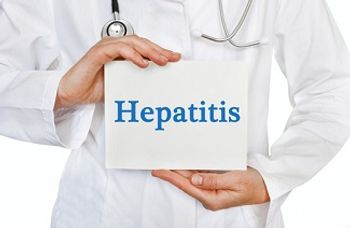
William Schaffner, MD, Shares Highlights From NFID Annual Conference on Vaccinology Research
Contagion® caught up with William Schaffner, MD, medical director of the National Foundation for Infectious Diseases, to discuss the highlights from this week’s NFID Annual Conference on Vaccinology Research.
Experts from around the world converged on Baltimore, Maryland, this week for the 2019 National Foundation for Infectious Diseases (NFID) Annual Conference on Vaccinology Research.
Scientists, researchers, and key opinion leaders met to share the latest updates on vaccines in the pipeline, combatting antimicrobial resistance, and how to address vaccine hesitancy.
Contagion® caught up with William Schaffner, MD, medical director of NFID and an infectious disease specialist at Vanderbilt University Medical Center, to discuss the highlights from the conference.
Interview transcript (modified slightly for readability):
Contagion®: What new research coming out at the Vaccinology Conference are you most excited about?
Dr. Schaffner: The thing that is great about this conference is it’s a cornucopia of new information. That extends all the way from basic work, as investigators in laboratories are trying to develop new vaccines, and then moving into implementation science. Once you have the vaccine, how can you get it out there to the target population and how can you evaluate the impact of the vaccine? And also there are social aspects of vaccinology—vaccine hesitancy, the anti-vaccination movement. All of those things are brought together in this 1 conference and that’s what makes it exciting.
As I look at the basic work, trying to develop new vaccines, and there are vaccine candidates and attempts to make new vaccines for dengue and Zika virus; herpes simplex virus; typhoid fever, an old infection that is still causing a great deal of stress in the developing world; shigellosis, a major bacterial cause of diarrhea; and, of course, our constant favorite, influenza.
That’s just work being presented at the conference. Every vaccinologist will have a top 4 and they are, from the point of view of global health and in no particular order, HIV, tuberculosis, malaria, and, of course, influenza. All of these cause a huge amount of disease around the world annually and if we have vaccines against those, that would be just extraordinary achievements in improving the public health of the world. It would have incredible economic impact.
There are presentations attempting to provide some further understanding and coping mechanisms with vaccine hesitancy and the anti-vaccination movement.
Although it’s not a formal presentation, there is a panel discussion and a reception that all of us who organized this meeting are very proud of. The title of it is: Recognizing Women in Vaccinology. There are some prominent women vaccinologists that are there to make presentations, answer questions, and be face-to-face with young women who are starting their careers and to offer information, support, and mentoring, and we’re very, very proud of that session.
Contagion®: Are there any novel delivery mechanisms in the works for vaccines?
Dr. Schaffner: We’re all familiar with the needle and syringe, but there are investigations on developing a microneedle patch so you can just put a patch on your arm and leave it there for a day or so and that would be it. Another way is a jet injector. They’ve been used in the past, put aside for a while for some safety reasons, but now in a redesigned format are starting to be used again, which obviously would help enormously in vaccinating large populations very quickly, for example, if we had a pandemic.
There are other investigators looking at…influenza vaccine in a capsule that you can swallow.
Contagion®: How do vaccines affect antimicrobial resistance?
Dr. Schaffner: It’s already been demonstrated that some of the vaccines that we use have had a very good impact, a felicitous impact, on antimicrobial resistance. Perhaps the most prominent are the pneumococcal conjugate vaccines that we use. It’s been shown in a number of studies that once you use pneumococcal conjugate vaccines comprehensively in a population—a community, a state, the United States, for example—the leftover pneumococcal strains that continue to cause disease are more antibiotic-susceptible because we’ve prevented the most antibiotic-resistance ones.
You also have a second effect which is, if you remove all those illnesses that used to occur, you’re using less antibiotics because you don’t have diseases to treat anymore. It’s clear by those 2 mechanisms, vaccines are already contributing to a reduction and a prevention of antimicrobial resistance.
In addition to pneumococcal vaccines, there are specific vaccines against typhoid fever, shigellosis, and E coli—all bacterial infections that have antibiotic-resistance issues. If we had good vaccines for them, and use them comprehensively, obviously we would have a big impact on the antibiotic resistance of those bacterial species.
But the other way to combat antibiotic resistance is to eliminate certain diseases for which antibiotics are often used. Influenza is a major issue. Of course we shouldn’t be giving antibiotics to treat influenza; influenza is a virus. But in practice, it happens a lot. So if we could eliminate a lot of that influenza, we would eliminate a lot of inappropriate antibiotic use.
The same is true for [respiratory syncytial virus]. If we had better vaccines and better treatments, then we would use less antibiotics when people get sick with those viruses.
Contagion®: How do we combat the issue of vaccine hesitancy?
Dr. Schaffner: This is not a uniform kind of issue; there are definitely anti-vaccination people and then there are vaccine-hesitant or vaccine-curious people. It’s clear that this is not going away. We can’t wave a magic wand.
Every doctor, every family doctor, and every pediatrician who’s out there caring for patients is also trying to be a vaccine educator, speaking to parents, providing them reassurance, comfort, and knowledge such that they can become comfortable and even, perhaps, convinced that that American Academy of Pediatrics/[US Centers for Disease Control and Prevention] vaccination schedule for children is appropriate and in their individual child’s best interest. That will continue to be the single most important thing.
All of us [also] have to provide rigorous scientific data that addresses the concerns that have been raised by the people who have concerns about vaccines and we must present that information in a straightforward fashion and in a way that they can understand it. But information is not going to be enough.
The measles outbreak is a good example because it occurs because of vaccine resistance. There are populations in the country where there’s a collection of people who have withheld their children from vaccination and then when measles is imported into the United States and enters those communities, it can spread readily because there are so many susceptible children. In that context, the public media play a very important role in providing the information that vaccination is good, disease is bad.
We have social structures that kind of help. The public health departments have to help. When my friend Patsy Stinchfield [RN, CNP, senior director of Infection Prevention & Control at Children's Hospitals and Clinics of Minnesota] dealt with the outbreak of measles in the Somali community, they had a lot of misinformation. She and others reached out to the Somali religious leaders, spoke with them, and the imams helped them get the word out about the importance of vaccination, vaccination is safe, it’s the appropriate thing to do, it’s best for your children. You’ve got to work with the leaders in the community to help enhance the acceptance of vaccines. [It’s] not easy, it would require a lot of attention, and I think this problem is now with us and will be with us for a foreseeable future.
The main reason we have this problem is we that have eliminated so many diseases. And if the mom— and, indeed, the grandmother now, with measles—have never seen measles, they don’t respect it or fear it and then it’s difficult to value the vaccine. Education, reassurance, good information, and doing what doctors have done always—comfort and reassurance and trust—are continuing to be important.
Contagion®: Speaking of measles, what is your take on the current measles outbreaks in the US?
Dr. Schaffner: All of us who celebrated the elimination of measles not only from the United States but from the entire Western Hemisphere, are in deep mourning and in a bit of a shell shock that there so many communities and individuals that have withheld their children from measles vaccine. Obviously, measles vaccine is safe. It has been given in the millions upon millions of doses. It’s enormously effective and measles itself is a really nasty infection.
A mother told me recently, “Well, why are you so worried about measles? It’s an illness with a rash; everybody used to get it.” She thought it was trivial. Measles make children miserably ill for a week or a week and a half. There are serious complications: otitis media, middle-ear infection; pneumonia; and encephalitis. One out of every 1000 children who gets measles gets an inflammation of the brain. Before we had measles vaccine, there were 400 to 500 deaths due to measles and its complications each year in the United States. Don’t tell me measles is a trivial disease and not worth preventing. Why would you expose your child to the chance of having this nasty infection with all of its complications?
The vaccine is safe. It does not cause autism, which is something that, although it’s been disproved now many times [by] many investigators in many studies in many countries, people still bring up.
Contagion®: What can we do to prepare for "Pathogen X”?
Dr. Schaffner: The response to Pathogen X requires a chain of events, a whole system, and everybody is on the alert and has to do their part. Early detection of the pathogen and then an evaluation of it to see how well it’s going to spread. If it looks like it’s going to spread, then you need the combined government private partnerships to start in the laboratory to create a vaccine and then to go out and test it and then put it into a format and manufacture it and deliver it, along with education, to the population that you intend to prevent. All of these steps need to take place in a reasonably integrated fashion. We have all these elements and, over the years, the various elements have gotten better in working together. It’s not perfect, but we’re in much better shape than we were 20 years ago.
Contagion®: What are some of the biggest challenges in the field of vaccinology right now?
Dr. Schaffner: The challenges are always, generation to generation, to attract young people into [vaccinology], to keep it moving forward, to improve the pipeline. There are investigators in the laboratories who develop vaccine candidates, but then they often enter what’s called the “valley of death” [where] you can’t get those candidates into vaccine trials because that’s where the huge financial need is. In order to get the vaccine candidate into a vaccine trial, [it] takes a large financial allocation and we are largely dependent on private industry today. And, of course, they don’t pursue each and every vaccine because some of those vaccines are likely to be aimed at the poorest people in the world and not to be so profitable. We need, also, to have the governments of the wealthier countries contribute to that to make sure that that scientific advance continues to move.
I always smile and remind people that a variety of organizations, including the CDC, have designated vaccines as one of greatest public health triumphs the 20th century and that will be true also in the 21st. And I love to harken to that old Philadelphian Ben Franklin who said, “An ounce of prevention is worth a pound of cure.” I really do believe that preventing illness is the highest goal of medicine and that’s what vaccines do.
Newsletter
Stay ahead of emerging infectious disease threats with expert insights and breaking research. Subscribe now to get updates delivered straight to your inbox.
















































































































































































































































































